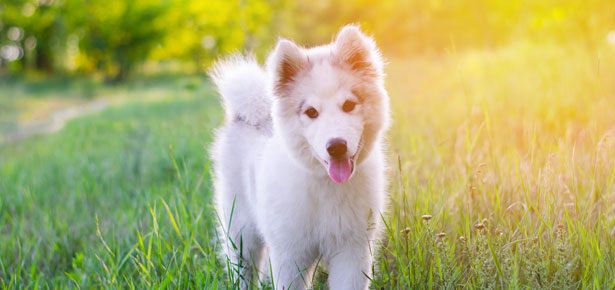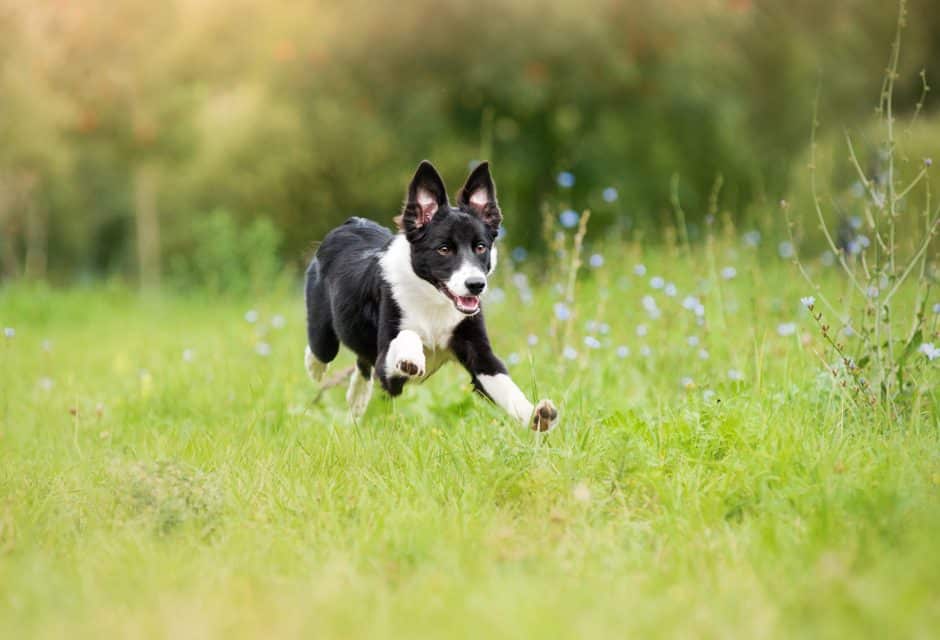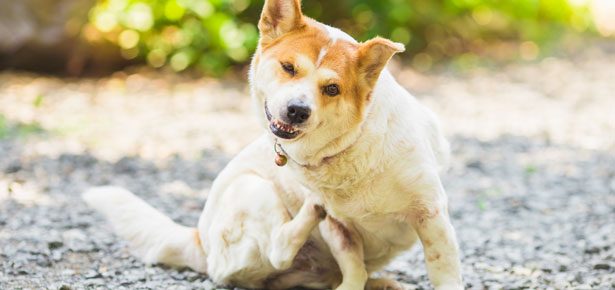

Food Allergies in Dogs
Nothing to sneeze at: food allergies and your dog—signs, symptoms and what to do
Is your dog itching and scratching? Does she have frequent ear infections or poor coat quality? You could be contributing to your dog’s distress without knowing it if she’s allergic to what you’re feeding her. Food allergies are a rising concern with dog owners and it seems like more and more dogs are suffering from them.
But what exactly is a food allergy?
Food allergies are different from food intolerance. Food intolerance is the result of poor digestion, such as lactose intolerance. People and dogs with lactose intolerance are either missing or have low levels of the milk digesting enzyme lactase.
Food allergies are the over-response of your dog’s immune system to an invading protein. In the case of a food allergy, this protein is contained in your dog’s food. Proteins are present in most of the foods your dog eats. While most people recognize that meats are a source of proteins, there are also proteins present in grains and vegetables. Any one of these proteins has the potential to cause a food allergy.

Saske_kun/Bigstock
Your dog’s gastrointestinal system (mouth, stomach, intestines) protects her from potential allergens each day. Approximately 70 percent of the body’s entire immune system is centered in the gastrointestinal tract. When your dog eats a meal, the food is first digested in the stomach. The large pieces of food are broken down into smaller pieces by stomach acid and then enzymes and stomach acid work together to break the complex protein structures down into smaller structures. The partially digested food then moves into the small intestine. The food is further digested until the proteins are broken down into their smallest parts, amino acids, which can then be absorbed into the body through special cells called enterocytes. Enterocytes act as both a welcoming hostess to amino acids that they like and want, and as bouncers (door guards) for amino acids they don’t like. When a whole protein is absorbed in the intestines instead of being broken down first, the immune system reacts and your dog shows symptoms of a food allergy.
When the System Works
The intestinal tract’s ability to prevent the absorption of whole protein is dependant on the health and integrity of the mucosal barrier. It is the proverbial guardian of the body at the gastrointestinal gate. The mucosal barrier (lining of the gut) is comprised of both structural components and immune system components. The structural components physically prevent the absorption of large proteins. The immune system component is responsible for recognizing potentially harmful contents of the gastrointestinal tract. The health and integrity of the gastrointestinal tract is dependant on the normal structure and function of the enterocytes, effective protein digestion, and the presence of the dog’s immune cells (called IgA cells) in the gastrointestinal tract.
The Gut and Immune System Together Prevent Food Allergies
IgA cells are a type of immune cell secreted in the intestine. Some of the IgA will float freely in the contents of the intestine while other IgA attaches to the wall of the intestine to prevent whole protein from coming in contact with the enterocytes. Just like volleyball players they bounce whole proteins back into the contents of the intestine for more digestion. The more effective protein digestion in the stomach and intestine is, the smaller the proteins are when they come in contact with the IgA. Small proteins and single amino acids do not get bound to the IgA and are allowed to pass by the IgA and be absorbed into the body as nutrients.
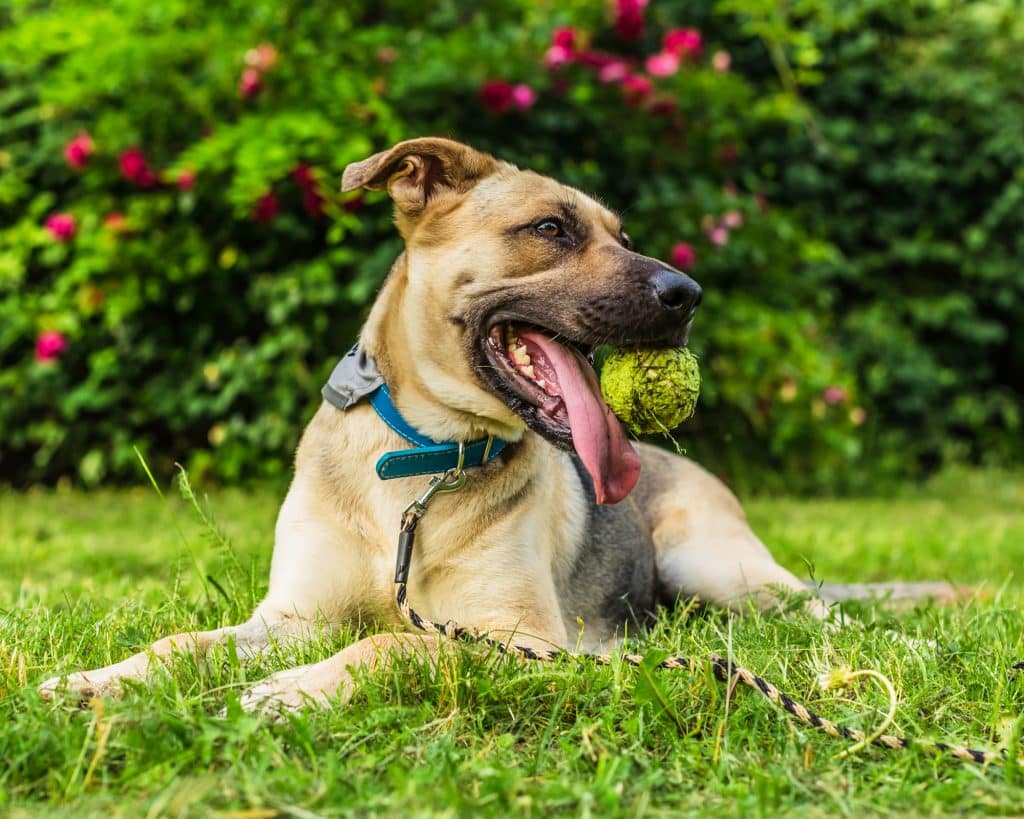
Lioneska/Bigstock
At a Glance
Some of the breeds most prone to food allergies include: Boxer, Cocker Spaniel, Springer Spaniel, Collie, Dalmatian, German Shepherd, Lhasa Apso, Miniature Schnauzer, Retriever, Shar Pei, Soft-Coated Wheaten Terrier, Dachshund, and West Highland White Terrier
Most common food allergens include: beef, dairy, and wheat.
Least common food allergens are fish and rabbit.
General signs and symptoms of allergies include: dry itchy skin, excessive scratching or licking, bald patches, a high frequency of hot spots, ear infections, skin infections, diarrhea, and vomiting.
When the System Fails
Malnutrition can affect enterocyte structure and function. A poorly functioning or damaged enterocyte can let whole proteins into the body. Once a whole protein has managed to breach all of the gut’s defenses, gut-associated lymphoid tissue (GALT) takes over. GALT can prevent the body’s natural immune response to a foreign protein. Most of the time this is what happens, but in the case of food allergies, GALT does not prevent the immune response and an allergic response (immune hypersensitivity) is formed.
Unfortunately, every time the food is eaten, this over-response of the immune response becomes greater. So continuing to consume the diet that caused the allergic response results in a greater and greater response every time. After this hypersensitivity is formed, each time the dog eats the food, mast cells in the body’s immune system release histamine. If this histamine release is large enough, it may manifest as diarrhea, itchy skin, chronic skin infections etc.
Isolating the Problem
The first thing you need to do is work with your veterinarian to make sure that your dog’s symptoms truly indicate a food allergy. If that’s the case, your vet will likely recommend that you try an elimination diet— feeding a food that has a different protein (meat) source and a different carbohydrate (grain) source than what your dog has had before. Common anti-allergy foods (novel protein sources) include kangaroo and oatmeal or venison and potato. This prevents the immune response from continuing to be triggered.
Your vet may also suggest that you try a hypoallergenic diet. These foods are made with hydrolyzed proteins. That means that the proteins are already broken down into pieces that are small enough that IgA won’t bind to them and they won’t trigger an immune response.
Lamb and rice foods used to be considered “hypoallergenic” when most commercial dog foods were made with chicken or beef and corn or wheat. Since most dogs had never had lamb or rice before, it was a good option for dogs that experienced allergies while eating a regular food. Now, however, many dogs are showing allergies to lamb and rice diets. This is to be expected since an allergy can develop to any diet. If your dog is allergic to lamb and rice you may need to find a food with different ingredients such as fish and oatmeal, or venison and sweet potato.
While your dog is on any special diet, it’s very important that she doesn’t get any other food such as cookies, treats, rawhides, people foods, etc. Since you don’t know yet exactly what she is allergic to, you don’t want to give her something other than her food and trigger the allergic reaction. Once you’ve got her on a food that she is not reacting to, you can start to reintroduce other foods. If your dog reacts, you’ll know exactly which food (or foods) causes the problem.
Preventing Food Allergies
Is there anything we, as owners, can do to avoid food allergies from developing? This is one of the toughest questions in dog nutrition today. While we still don’t really know how to prevent allergies entirely, there are things you can do that may help your dog fight off numerous allergies.
Promote a healthy mucosal barrier.
This can be done by ensuring that our dogs, and especially puppies, have adequate nutrition and health care.
Watch out for gastroenteritis.
There have been some theories that early gastroenteritis or severe gastroenteritis, especially in puppies or young dogs, can result in an adult dog that is more likely to develop food allergies. Preventing gastroenteritis, in theory, is easy— just don’t let your dog eat anything but dog food and treats. In actuality, this is much harder to deal with. Dogs eat a variety of things, some that are not harmful—grass, dirt, bark, wild berries (i.e., raspberries, strawberries), sometimes a little cow or horse dung—and some that are not good for them (rotten garbage or dead animals). It can be very hard to police what goes in your dog’s mouth.
If you suspect that your dog has gotten into garbage or eaten something that may cause tummy upset, it may be best to feed your dog a low-protein diet (boiled white rice or potato) until the suspected tummy upset passes or you consult your vet. In general, if diarrhea lasts more than 72 hours without signs of getting better or if the diarrhea seems especially severe or malodorous, you should consult your vet. In these cases, do not attempt to treat the dog yourself with over-the-counter medications because diarrhea is the body getting rid of bad things in the gut. To give something that stops the diarrhea can result in keeping the bad things in the gut and causing a serious illness.
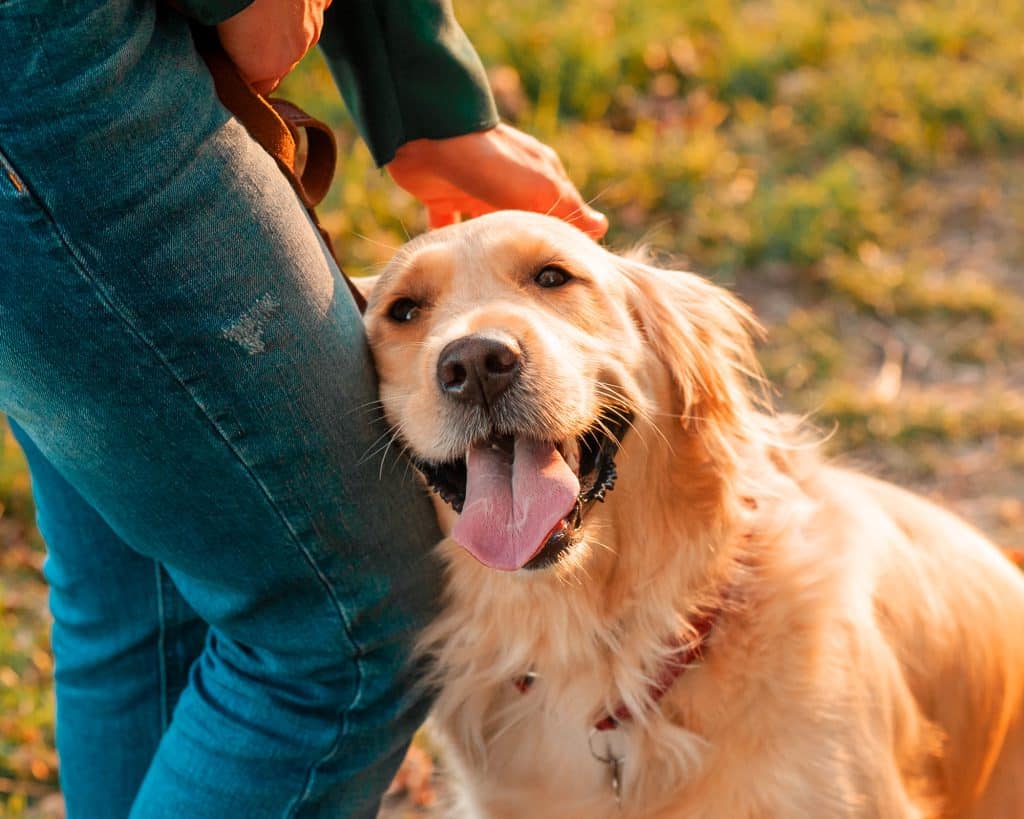
trofalena/Bigstock
Promote effective protein digestion.
In general, your dog should have no problem digesting protein. If you are feeding a homemade cooked or raw diet, grinding or blending your protein source in a food processor can be helpful in improving protein digestion. In kibble-fed dogs, the protein is already ground before it is kibbled so there is no need to grind it.
Choose a dog food with exclusive protein sources.
A food that only has one or two protein sources can be helpful in giving you more choices later on should your dog develop an allergy. For example, if you use a food with five protein sources (i.e., turkey, chicken, duck, salmon, and tuna) and your dog develops an allergy to it, you now have to find a food that doesn’t contain any of these protein sources. This can be challenging. Conversely, if you feed a diet with chicken as its sole protein source and your dog develops an allergy to it, you can easily find a diet that doesn’t contain chicken.
Preventing food allergies may be impossible in dogs that are prone to developing food allergies. Some breeds are becoming noted for food allergies (see sidebar p.82). As a result, it is possible that a propensity for developing food allergies may be genetic, in which case, we should avoid breeding dogs that have food allergies.
Don’t Give Up
Dealing with a dog with food allergies can be challenging and disheartening. Proper diagnosis of food allergies can make it easier and understanding why food allergies start can help us prevent future allergies from starting. On a personal note, my Labrador has had food allergies all his 12.5 years. It has been a long road and often a difficult one. It is so much easier to find novel protein sources now than it was 12 years ago. If you have a dog with allergies, take heart, it will get better. Try the 5Strands Pet Standard Package as it determines the key intolerances your dog may be having to 380 of the most common pet food ingredients & environmental items.
Looking for some alternatives or extras to feed to your dog? Check out our list of 10 “People” Foods for Dogs.
This article originally appeared in the award-winning Modern Dog magazine. Subscribe today!
Join the newsletter and never miss out on dog content again!
"*" indicates required fields
By clicking the arrow, you agree to our web Terms of Use and Privacy & Cookie Policy. Easy unsubscribe links are provided in every email.


